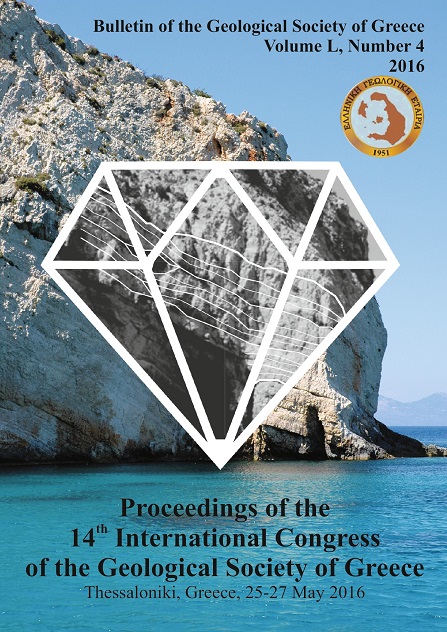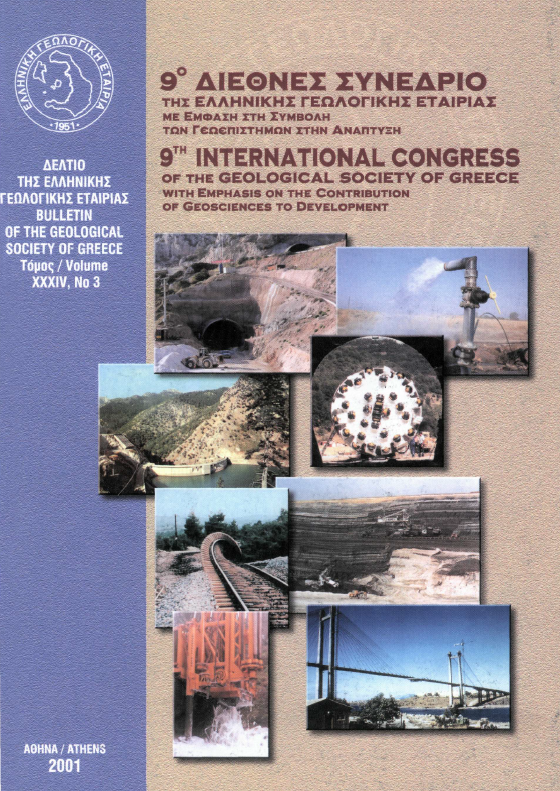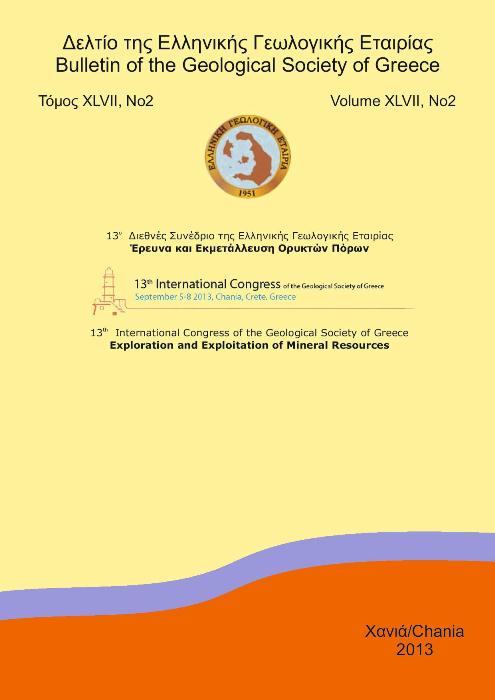GEOCHEMICAL ANALYSIS OF SILICEOUS SEDIMENTS FROM VASILIKA, NORTHERN GREECE
Résumé
The present paper presents new mineralogical and geochemical data of the siliceous sediments from the region of Vasilika in northern Greece. The studied material consists of reddish and brownish cherts and jaspers containing mostly microcrystalline quartz and Fe-oxides. Chemical analysis has been carried out, including the identification of major oxides, trace elements and REE, in order to determine their geotectonic affinity based on the correlation of immobile trace element distribution. The geochemical features combined with the mineralogical composition of these siliceous sediments indicate that they were formed as the result of a hydrothermal circulating convection system near a mid-ocean ridge. Rare earth elements (REE) are regarded as the most reliable immobile elemental components in the complex geological process of the sedimentary cycle because they are relatively stable during post-depositional processes such as diagenesis, alteration and weathering. In addition Ce anomaly can help to establish the marine environment in which cherts were formed
Article Details
- Comment citer
-
Karageorgiou, S., Vavelidis, M., Andreou, S., & Melfos, V. (2016). GEOCHEMICAL ANALYSIS OF SILICEOUS SEDIMENTS FROM VASILIKA, NORTHERN GREECE. Bulletin of the Geological Society of Greece, 50(4), 1859–1866. https://doi.org/10.12681/bgsg.11925
- Rubrique
- Petrology and Mineralogy

Ce travail est disponible sous licence Creative Commons Attribution - Pas d’Utilisation Commerciale 4.0 International.
Authors who publish with this journal agree to the following terms:
Authors retain copyright and grant the journal right of first publication with the work simultaneously licensed under a Creative Commons Attribution Non-Commercial License that allows others to share the work with an acknowledgement of the work's authorship and initial publication in this journal.
Authors are able to enter into separate, additional contractual arrangements for the non-exclusive distribution of the journal's published version of the work (e.g. post it to an institutional repository or publish it in a book), with an acknowledgement of its initial publication in this journal. Authors are permitted and encouraged to post their work online (preferably in institutional repositories or on their website) prior to and during the submission process, as it can lead to productive exchanges, as well as earlier and greater citation of published work.







